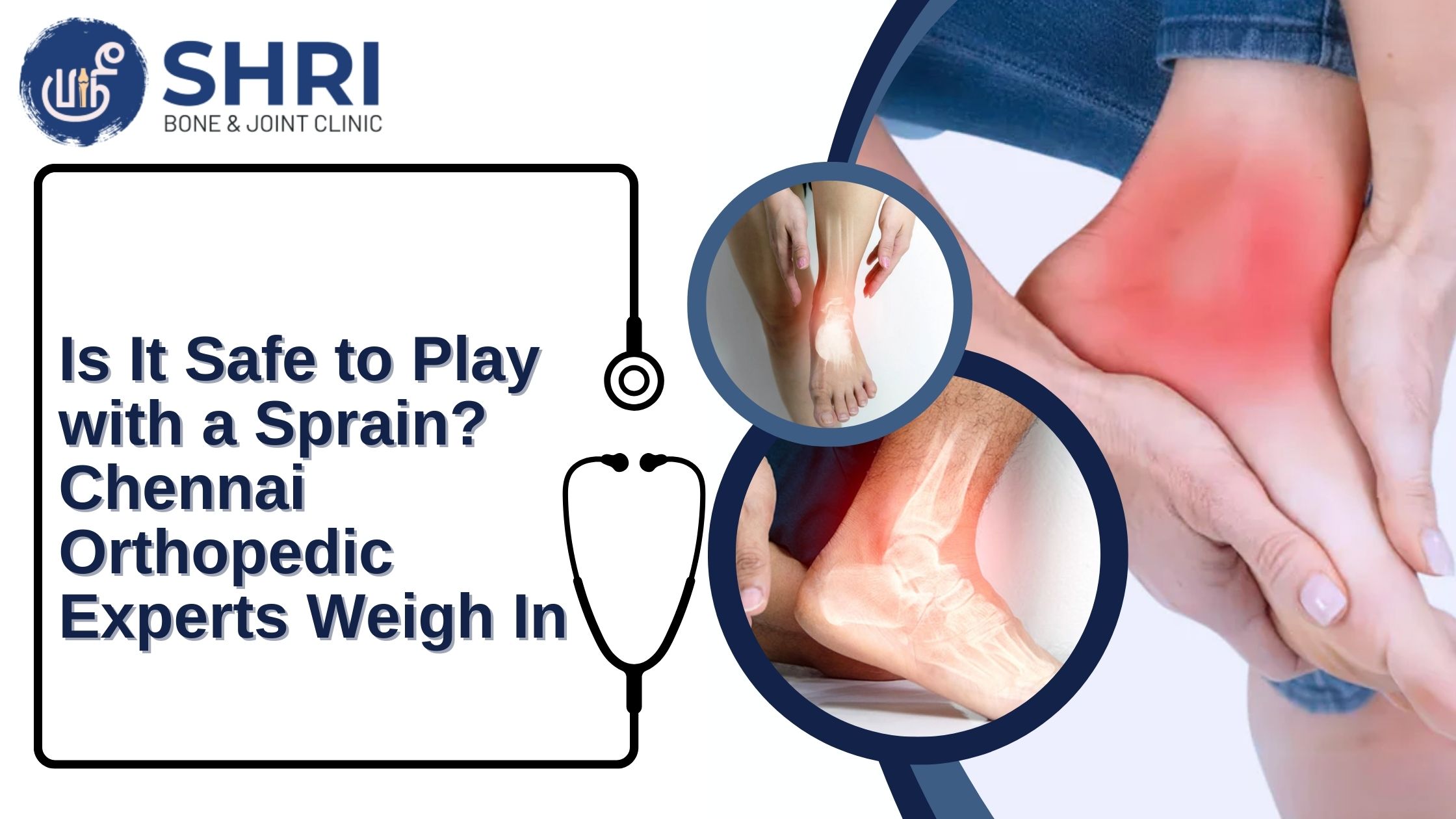When you’re passionate about your sport, it’s tempting to push through the pain. Many Chennai-based athletes—from school cricket players to weekend footballers—often ask, “Is it okay to keep playing with a sprain?” The short answer? No. While a minor sprain might seem harmless, continuing physical activity without proper treatment can worsen the injury and lead to long-term damage.
At Shri Bone & Joint Clinic, Dr. Shriram Krishnamoorthy, one of the most respected Orthopedic Specialists in Chennai, sees countless athletes who regret ignoring early signs of injury. This blog helps you understand what sprains are, why they shouldn’t be taken lightly, and how to heal properly.
What is a Sprain?
A sprain refers to the stretching or tearing of ligaments—the tough bands of tissue that connect bones in a joint. Sprains most commonly occur in the ankle, knee, and wrist, with ankle sprains being the most prevalent among Chennai athletes due to running, jumping, and sudden changes in direction.
Grades of Sprains: How Severe is Yours?
Sprains are categorized into three grades:
- Grade 1 (Mild): Slight stretching and microscopic tearing of the ligament fibers
- Grade 2 (Moderate): Partial tearing of the ligament with noticeable looseness in the joint
- Grade 3 (Severe): Complete tear of the ligament causing instability and significant swelling
Even if your sprain is mild, returning to activity without healing increases the risk of a more serious Grade 2 or 3 sprain.
Risks of Playing with a Sprain
Pushing through a sprain can cause:
- Further tearing of ligaments
- Joint instability
- Delayed recovery
- Chronic pain or stiffness
- Permanent joint damage
Many patients who return to play too soon end up requiring more extensive treatments later, such as surgeries or long-term physical therapy.
How to Know if You Should Stop Playing
If you’re experiencing any of the following, it’s best to pause and consult a specialist:
- Persistent pain or throbbing in the joint
- Swelling that doesn’t subside after rest
- Difficulty bearing weight or moving the joint
- Feeling of instability or “giving way” during movement
- Ignoring these signs may prolong recovery and even endanger your ability to return to your sport fully.
Treatment Options for Sprains
At Shri Bone & Joint Clinic, we believe in a structured, evidence-based approach to injury management. Treatment may include:
- R.I.C.E Method: Rest, Ice, Compression, and Elevation
- Pain management: Anti-inflammatory medications and cold therapy
- Bracing or Splinting: To stabilize the affected joint
- Physical Therapy: Focused on strengthening and regaining mobility
- Advanced Treatments: In cases where there’s persistent pain, options like regenerative therapy or surgery may be required
For ankle-related discomfort, we offer tailored Ankle Pain Treatment plans that focus on both pain relief and long-term joint preservation.
Don’t Overlook the Heel & Achilles
Many patients who suffer from sprains in the foot or ankle also develop secondary issues like heel pain or Achilles tendon stress, especially if they continue activity without healing.
- Heel Pain can be a sign of plantar fasciitis, often triggered by uneven pressure due to limping after a sprain.
- Achilles Tendon injuries may result from overcompensating due to an unstable ankle or improper footwear during the recovery phase.
If you’re noticing tightness, soreness, or reduced flexibility in the heel or back of your ankle, consult our clinic for Heel Pain Treatment or expert Achilles Tendon Treatment before complications develop.
Expert Opinion: Dr. Shriram Krishnamoorthy Speaks
“Many athletes come in saying the pain ‘isn’t that bad.’ But it’s always better to treat a Grade 1 sprain than to wait until it becomes a Grade 3 ligament tear,” says Dr. Shriram Krishnamoorthy, Chief Consultant at Shri Bone & Joint Clinic.
“With proper guidance, rest, and therapy, most sprains heal quickly. But if left untreated, they can evolve into chronic joint issues. That’s why it’s essential to consult an Orthopedic Specialist in Chennai who understands both the demands of your sport and the science of joint recovery.”
Final Thoughts
So, is it safe to play with a sprain? Absolutely not. Taking time off to heal is far better than risking a long-term injury. Whether it’s a mild twist or a recurring ankle issue, Shri Bone & Joint Clinic offers the expertise you need for fast and safe recovery. Don’t let one small sprain derail your performance or your future in sports.

